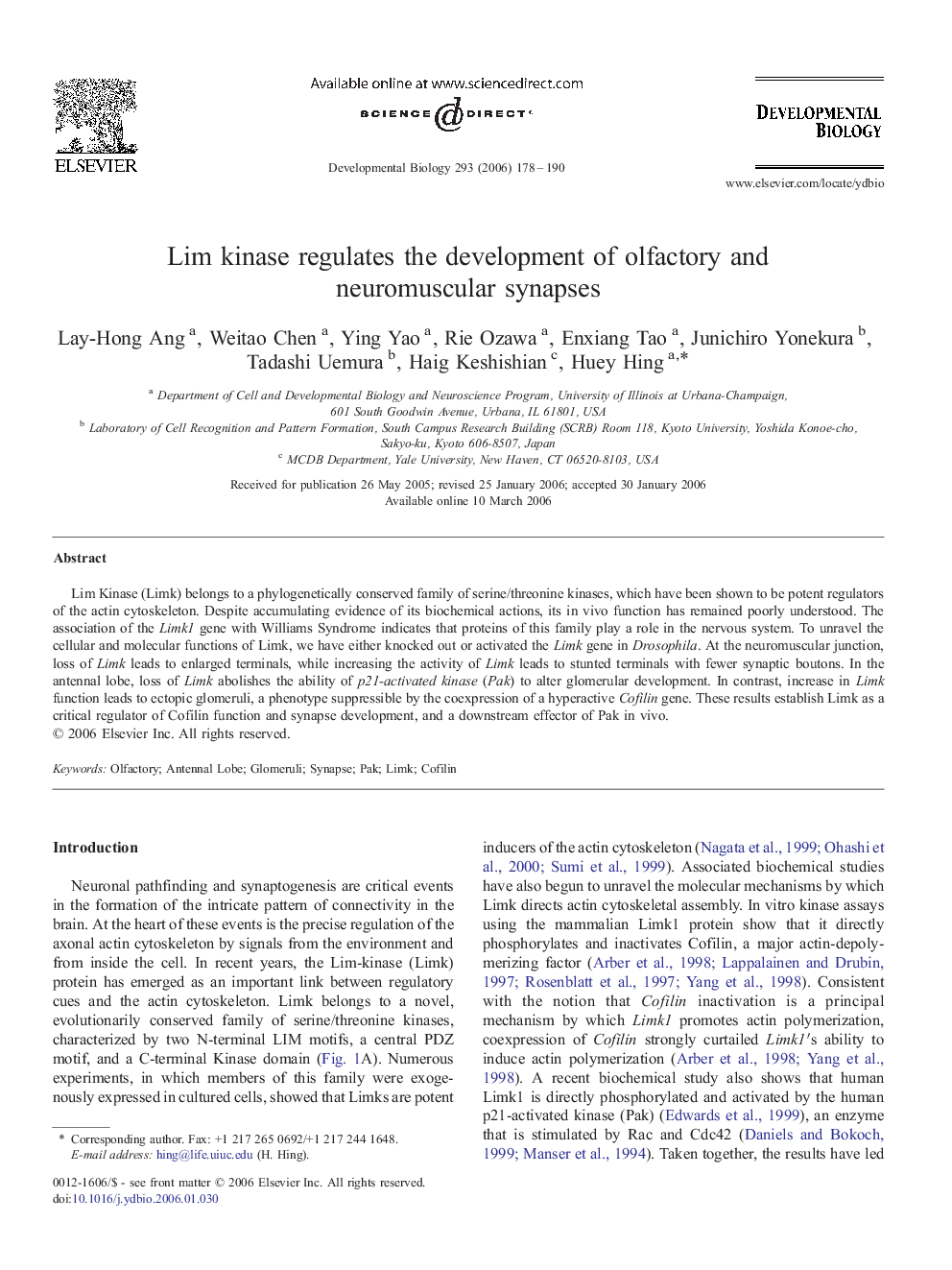| Article ID | Journal | Published Year | Pages | File Type |
|---|---|---|---|---|
| 2176071 | Developmental Biology | 2006 | 13 Pages |
Lim Kinase (Limk) belongs to a phylogenetically conserved family of serine/threonine kinases, which have been shown to be potent regulators of the actin cytoskeleton. Despite accumulating evidence of its biochemical actions, its in vivo function has remained poorly understood. The association of the Limk1 gene with Williams Syndrome indicates that proteins of this family play a role in the nervous system. To unravel the cellular and molecular functions of Limk, we have either knocked out or activated the Limk gene in Drosophila. At the neuromuscular junction, loss of Limk leads to enlarged terminals, while increasing the activity of Limk leads to stunted terminals with fewer synaptic boutons. In the antennal lobe, loss of Limk abolishes the ability of p21-activated kinase (Pak) to alter glomerular development. In contrast, increase in Limk function leads to ectopic glomeruli, a phenotype suppressible by the coexpression of a hyperactive Cofilin gene. These results establish Limk as a critical regulator of Cofilin function and synapse development, and a downstream effector of Pak in vivo.
